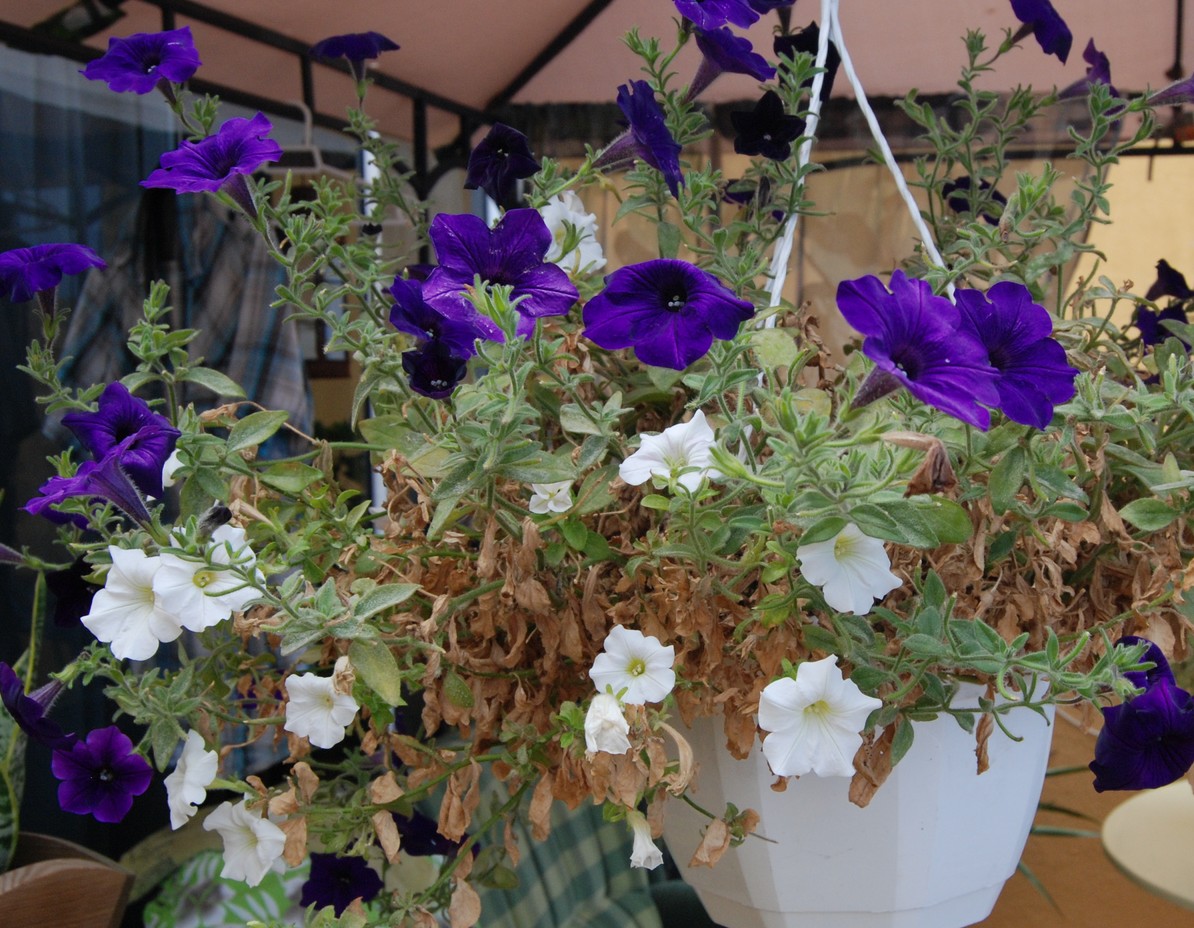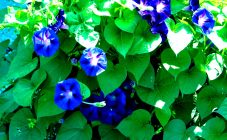Petunia is a very delicate and attractive flower that adorns not only flower gardens and personal plots, but also balconies and terraces. The culture is unpretentious in care, flowering will delight the eye from mid-summer to the first frost in the fall. But experienced and novice agronomists are often concerned with the question of why petunia dries, petunia withers, what to do. Petunia leaves dry: causes and methods of dealing with the problem are the topic of today's article.
Features of petunia
All varieties of petunia have a weakly branched root system, the depth is small. The stems are characterized by a rounded shape, they are painted in a rich green color.
The stems can branch or be erect, and the culture can also be short (usually not more than 30 cm) and tall (the length varies from 60 to 70 cm).
Culture is conventionally divided into several types:
- Shrub plants are usually grown on balconies and flower beds in the garden.
- Ampel varieties - grow in hanging pots and pots. When planted in open ground, they spread over the surface of the earth.
- Cascading (semi-ampel) varieties are planted in window or balcony containers, hanging pots. This is due to the fact that during development, powerful erect shoots grow, which hang under their weight.
Why petunias disappear: the main reasons
Many gardeners wonder why petunias wither, turn yellow, dry and wither, if all the rules of agricultural technology have been followed. There may be several reasons for this.
- The most common reason why petunia dries up in pots, on balconies and in flower beds is improper watering and care in general. The plant can dry out if the root dries up in the sultry heat, and, on the contrary, grows in moisture in the cool heat. These factors lead to decay of the root system, as a result, the plant dies.
- Lack of ventilation (fresh air). As practice shows, all varieties of petunias often dry out or dry up in glazed balconies when it is a sunny hot day. To solve the problem, it is recommended to open all windows on warm days, and in summer, if possible, take plants outside.
- The plant is deficient in iron, when irrigated, not settled hard water from the tap is used, sharp temperature changes.
- The harmful effects of disease. In most cases, plants can dry out due to the development of fungal diseases. The mechanism of progression of pathology is identical in everyone, the fungus affects the stem, as a result, nutrients cannot penetrate through it. The plant gradually becomes withered, since it is not provided with moisture and nutrients.
- Insect damage.
They like to eat petunia:
- Spider mites are small red beetles. In the process of their life, they envelop the plant with a silvery cobweb. Against this background, the humidity regime changes, which significantly increases the likelihood of developing a secondary infection.
- Aphids are an insect of miniature size, painted green or gray. Parasites live on the back of the leaf plate, which contributes to the wilting of the leaf. Another clear sign of aphid infestation is the curling of the ends of the leaves.
- Nematodes are worms that, when damaged, begin to "work" on the root system. According to the symptoms, the problem resembles the course of fungal diseases. Nematodes suck out all the juices from the plant, which leads to death.
Petunia dries up: what to do
To prevent petunia from dying, she needs help. But before helping, it is necessary to establish the root cause of the problem and only after, taking into account the provoking factor, start treatment.
| Cause | What is required | Algorithm of actions |
|---|---|---|
| Improper watering | Drainage; | 1. If the reason for the wilting of the plant is excess moisture, the plant should be transplanted immediately. |
| New container (flower pot); | 2. To avoid stagnation of water in the pot, it is imperative to fill up the drainage. | |
| Soft water at room temperature. | ||
| Iron deficiency in the soil (iron chlorosis) | A solution of ferrous sulfate or citric acid. It is necessary to dilute the substances in boiled chilled water. | Irrigate the plant with the resulting composition after watering with plain water. |
| Gray rot | Chemicals, for example, Skor, Integral; | 1. Make adjustments to the care procedures - moderate watering with soft water, good illumination, air humidity no more than 80%. |
| Chalk, wood ash or charcoal. | 2. It is necessary to remove the affected plant fragments | |
| 3. Carefully process the petunia with chalk or charcoal. | ||
| 4. Irrigation with drugs, prepare the solution strictly according to the attached instructions for use. | ||
| Powdery mildew | In case of weak lesions, it is recommended to use iron / copper sulfate, Fundazol or Fitosporin preparations. | 1. Remove the affected fragments, provide fresh air to the plant, treat the soil with Bordeaux liquid. |
| If the disease is severely affected, it is advisable to use Pure Flowers, Proton or Ordan. | 2. Treatment of the plant with chemical preparations according to the attached instructions for use. | |
| Spider mite | When this parasite is affected, drugs such as Apollo and Neoron are indicated for use. | |
| Aphid | The most effective drugs designed to combat aphid colonies: | 1. In case of weak damage to aphids, insects are pre-collected by hand; to achieve a stable and long-term result, the plant is irrigated with a non-concentrated solution of chemicals. |
| 2. In case of severe damage, it is advisable to immediately start processing with chemicals. | ||
| Decis or Confidor (0.5 ml for 1 liter of water); | ||
| Aktara (for 1 liter of water 1 g of the drug); | ||
| Fufanon (1 ml for 1 liter of water). | ||
| Nematodes | In relation to nematodes, the drug Narcissus is effective (0.5 ml per 1 liter of water). | It is quite difficult to get rid of these worms. If the chemical did not have the proper effect, the plant must be transplanted into new soil, after pretreating the root system with a weak solution of potassium permanganate. |
Petunias are attractive and unpretentious plants; even novice agronomists can grow them. For successful cultivation, you must not only familiarize yourself with all agrotechnical rules, but also strictly follow them. When the first signs of deviations appear, you should immediately begin to identify the root cause. In most cases, the solution to the problem is to make adjustments to the care, if necessary, chemicals are used.














